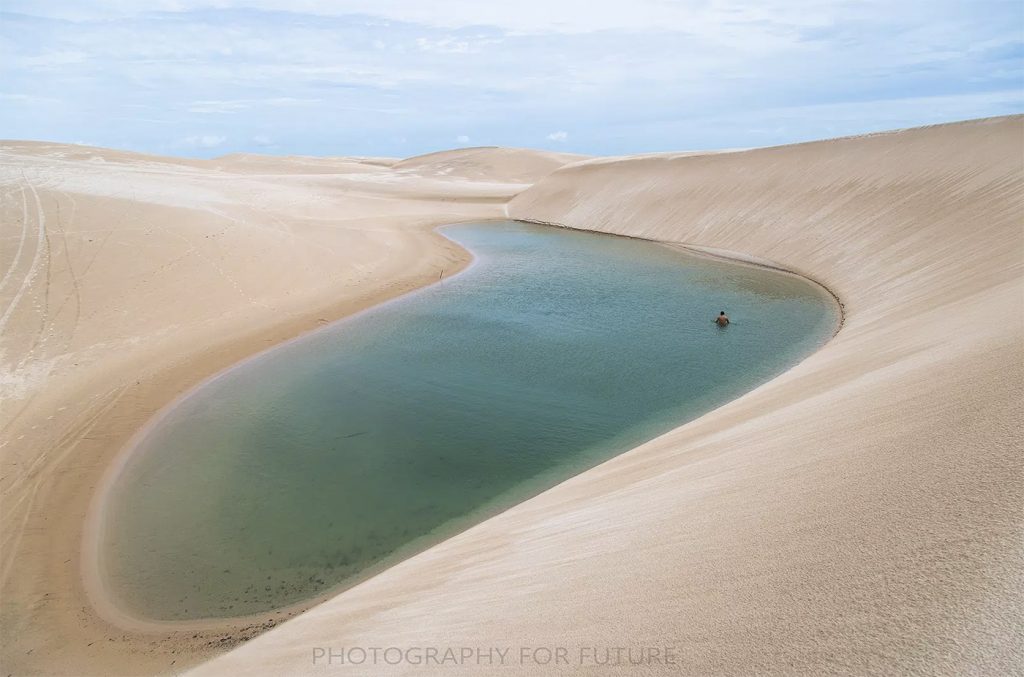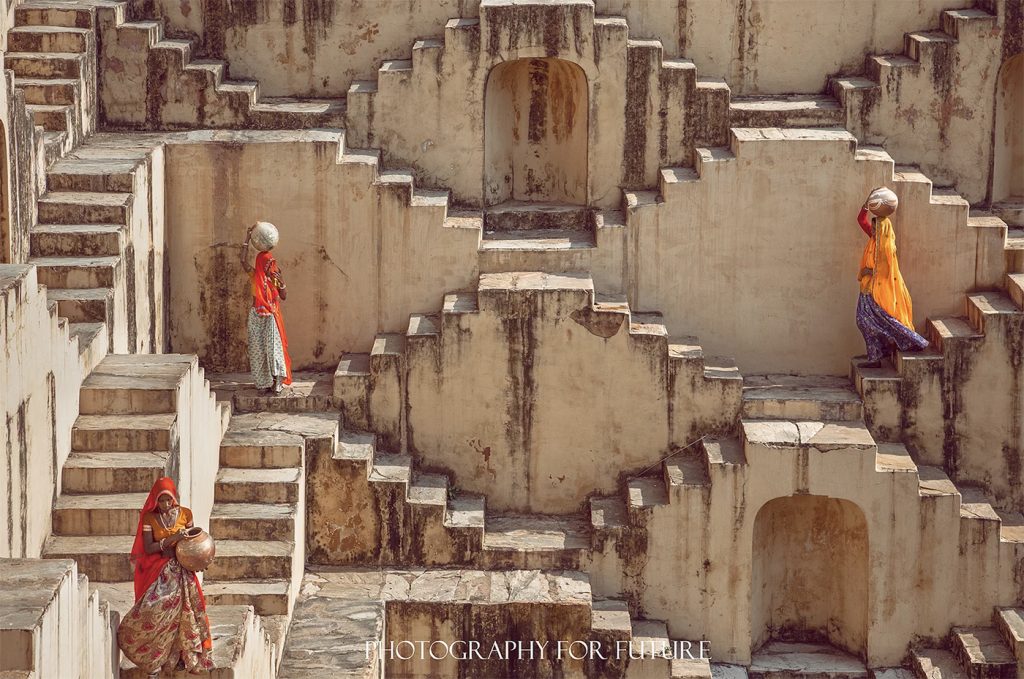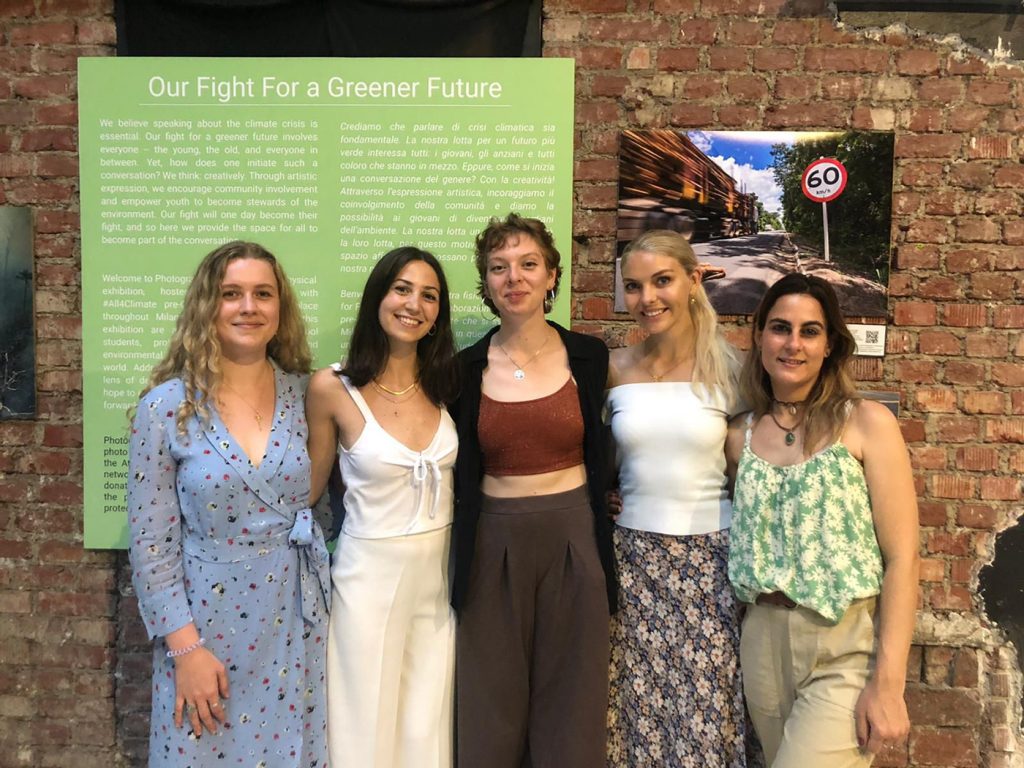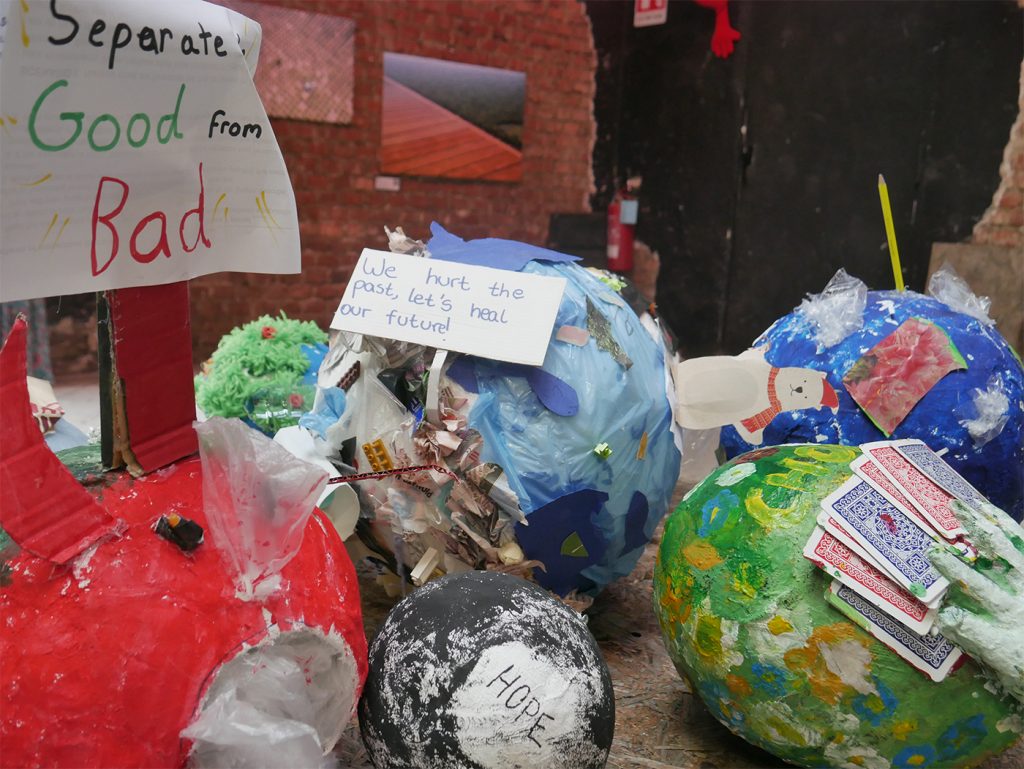Photography for the Future, is a non-profit online gallery founded by Paige Hahn. Based in Milan (Italy), this gallery works as a totally online platform that can be accessed from all corners of the world; here it is evident how photography and reforestation can contribute to the fight for the environment.
The contributing photographers have come together across all borders and from all walks of life in a joint mission for a better future of the environment.
Photographs of landscapes and wildlife that show the beauty and fragility of nature; 100% of the profits go to reforestation projects. This gallery works in conjunction with the NGO Weforest. This organization is dedicated to the reforestation mainly of the Atlantic forest of Brazil, since it suffers from a great exploitation due to the production of meat, soybeans and carbon fossils and for this reason deforestation is a big problem.

Paola Manganotti, Partnership Manager of Photography for the Future in an interview for the magazine, reveals how this photographic gallery works and how they contribute to help reforest the Atlantic forest of Brazil.
Deforestation in the Atlantic rainforest has increased in the last decade due to the growing demand for beef, soy, and land; Can you explain to me how photography for the Future works? And how does photography contribute to reforestation?
Well, to start, deforestation is a growing problem that many companies and organizations deal with. However, the attention to the Atlantic rainforest is much less. Photography for future plays an active role in the fight against this problem by planting one tree for every 2 euros received by donors.
All the benefits obtained go 100% to our reforestation projects.
Participating in these projects is very beneficial, as we love how photography and reforestation can work together. Our goal is to help the ecosystem return to its origins. Local biodiversity is also promoted, which includes animals, trees and the environment of the indigenous peoples who live in the forest. What we do is that we search photographers who want to contribute and donate their photos, and then we sell them. 100% of the profits go directly to this nature conservation work and each print they sell helps to plant up to 80 trees in the Brazilian Atlantic Forest.
All photographs are donated. From where they come? and who has donated them?
Paige did a lot of research on the artists and photographers before contacting them. After the first selection, where she checks if they have photos that qualify for the gallery, she then asks them if they would like to collaborate with us. What we do is that we ask them around 100 and 200 pieces a year in collaboration with the gallery. Some of them are in fact National Geographic photographers, for the art exhibition that we did recently, in this exhibition there was a photojournalism section where we showed more about the problem of deforestation in Southeast Asia and Brazil, this time we worked with a Well known photographer named Sean Gallagher who works for the BBC and The Guardian, he donated a photograph, but only for the exhibition, then we had to return it.

Are the prints you create sustainable? Can you explain the process and the materials you use?
We print them here in Milan, because our supplier prints the images with acid-free inks, so they are all sustainable. The package we use is 100% recycled and recyclable. Furthermore, for delivery, if it is in Milan one of us will deliver to avoid any extra carbon footprint. If it is somewhere outside Lombardy or Europe we will find the most sustainable way of shipping although it would take a little longer.
What are Photography for the Future’s greatest achievements so far?
I will say that the greatest achievements are; first, this recent event that we did. A lot of people came to the event, not only those who had already heard about us, but also strangers. We managed to sell two paintings in two days, which is a great achievement for us.
The participation of people who had never heard of us was very large and, for once, after the Covid situation, people were able to come to meet us, see our photos, see what we do and why we do it, so I think that’s probably the biggest achievement.

You mention a recent physical event, what was the impact of the organization in the community? And also, a large part of the events and workshops focused on children. What is this about?
We did 7 different workshops with 7 different schools, so probably the biggest impact we had was at the school, we think to really make a change. We have to start with young children, so our goal is always to raise awareness in the younger generation and make them understand that they can do something. By involving them they can see what is happening, what they can do and really make them think about how they can work for a better future.
Our method is mainly working with photography and reforestation, but some of the artistic work that they did in the exhibition was incredible. One group of them created an application to recycle garbage in the city, others created a model of a house made only with recycling elements and showed how it would work if they had solar panels by making an example of what it would be like to create your own energy. It was a 0 impact house and they were only 12 years old, that is, so young. They have such a deep understanding. Even the kindergarten kids knew why cutting down trees is bad and that we don’t have to eat a lot of meat, they were only 3-5 years old.
Why do you think it is important to teach children about sustainability or reforestation through photography?
Today’s children have all kinds of media where they can interact and communicate. It is very easy to stay in touch with what is happening and transmit a message using social networks. Just take a picture and add some graphic to make it an environmental campaign.
We believe that using art to tell what is happening is a way of approaching the problem. For example, deforestation is happening in Latin America or Indonesia. It is not something that you think is affecting your life here in Europe; On the other hand, if you also give them the possibility to see with their eyes what is happening, the problem comes here. This is a way of raising awareness and making them say “okay, I can do something about it”, I don’t know anymore they just hear it, they can now be fully aware of it.
That is why art is a perfect way to make them aware of the real problem, we believe that photography and graphics are the most powerful way to make them think.

How do you think a non-profit photo gallery influences the art industry?
Photography for the Future was created less than a year ago, so I think we don’t have much influence in the art industry. For the future we would like to encourage art galleries to start creating a second result when they sell something, for example, donating part of the profits to an environmental project and taking part in the fight for a healthier and greener future. All the artists we work with have a sense of duty to contribute, so they not only donate paintings, but also make videos that show the impact of deforestation and work with the communities that suffer the most from deforestation.
We believe that it is a revolutionary way of making art because they are very involved and have an impact on the community. I think something is changing in the art industry, but it is not only because of us, but also because of all the artists who want to contribute to us.
And to conclude the interview, can you tell me what the next steps are for Photography for the Future?
We will continue working with the schools, doing the workshops and trying to do as many events as possible. Maybe use different themes but surely continue using photography and reforestation as one. The place where we hold the workshops and events offers us to hold a periodic event, something that we would like very much.
If you like the idea of working with children through art, photography and social networks, you may also like Earth speakr.






